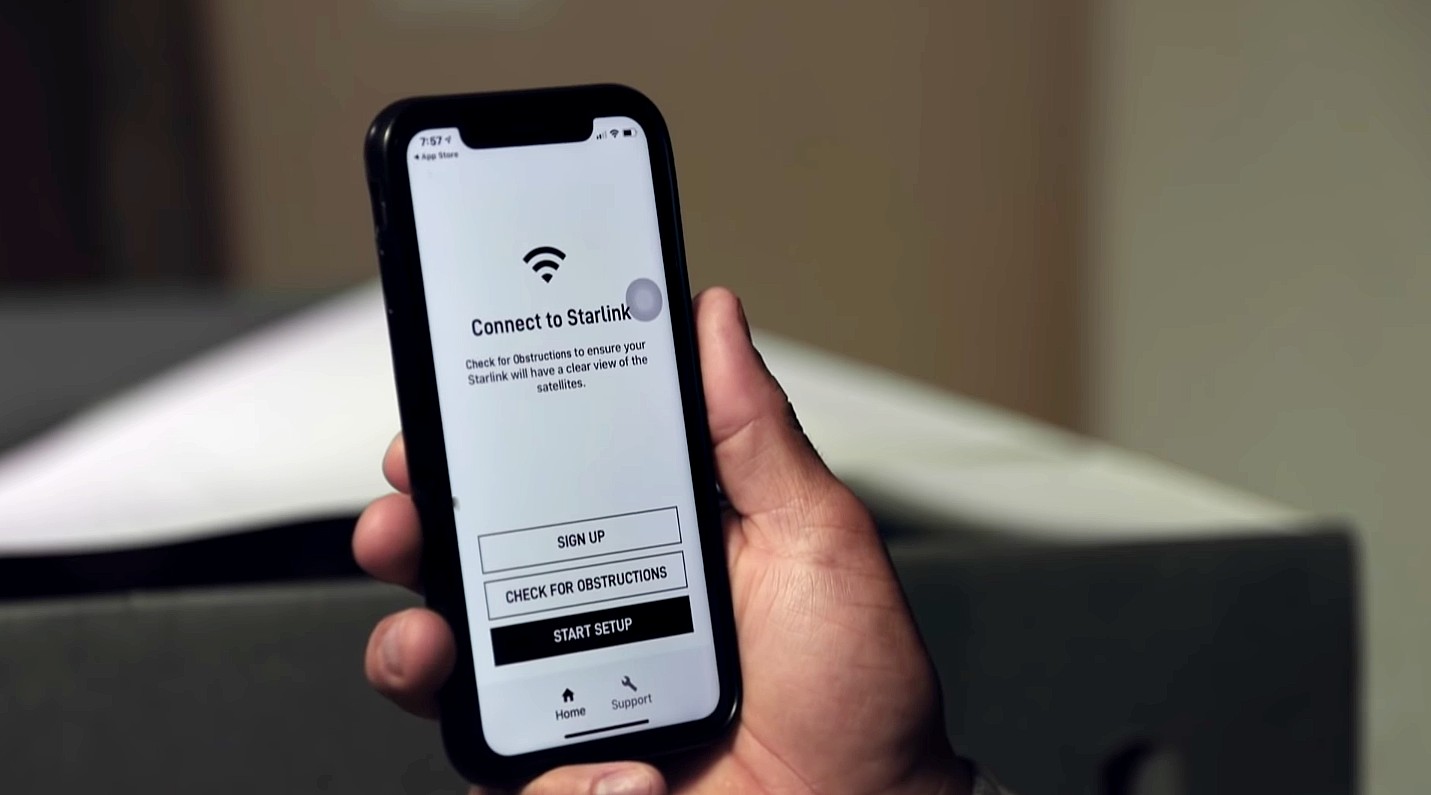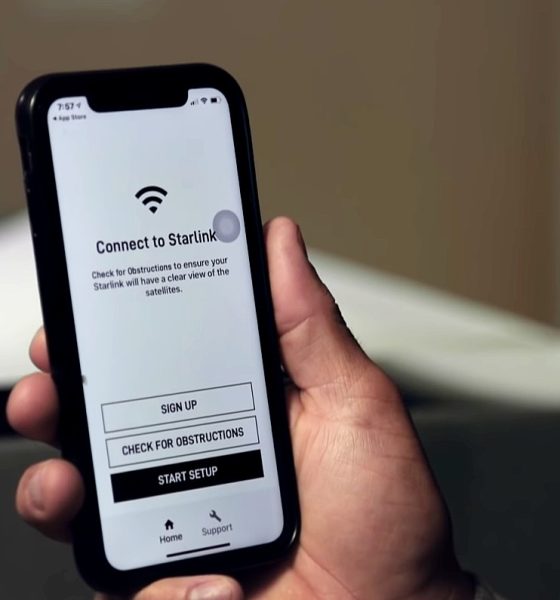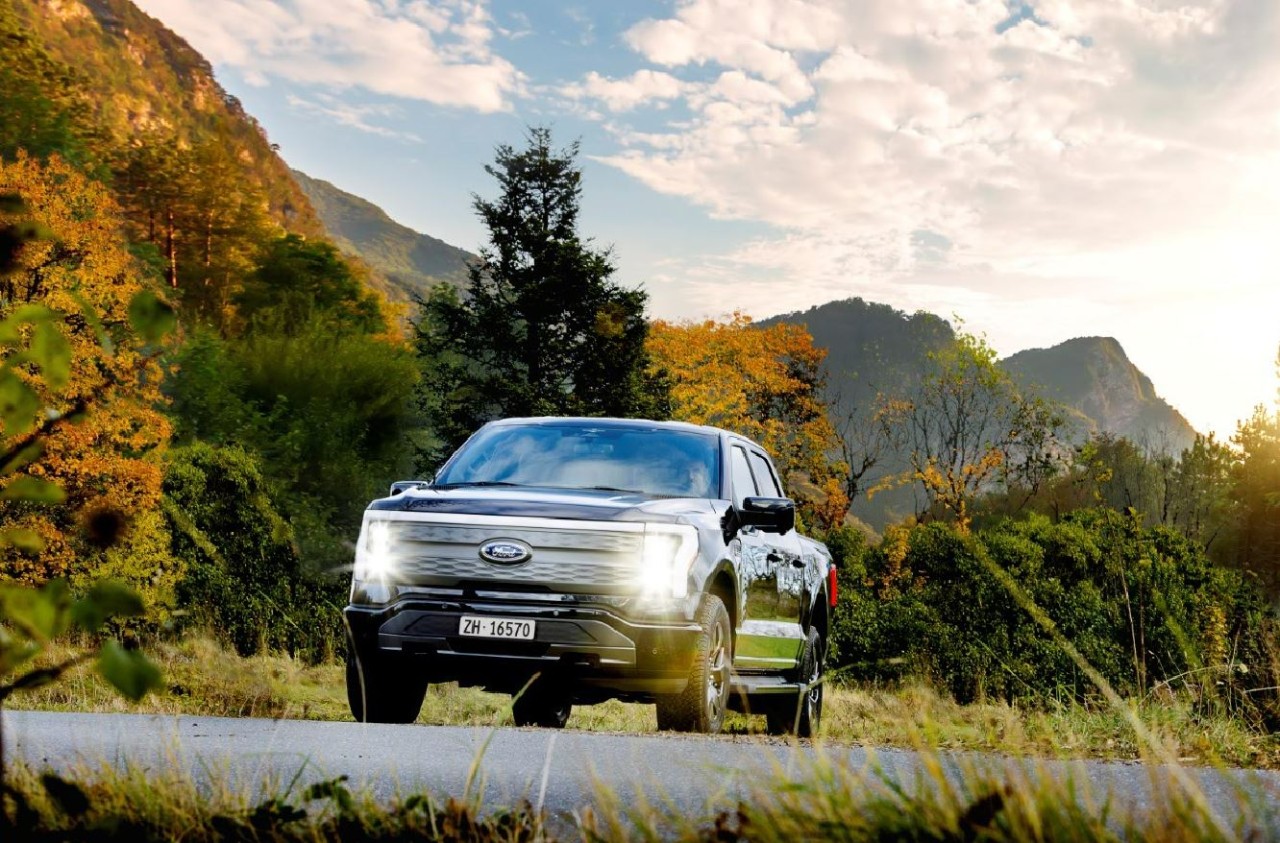

News
Elon Musk’s Starlink filings show plans for phone service and low-income web access
It appears that Elon Musk’s Starlink satellite constellation is not just aiming to provide high-speed internet service. Based on recent filings to the Federal Communications Commission (FCC), Starlink also plans to introduce a suite of related products to its portfolio, from a dedicated phone service, emergency backup for voice calls, and more affordable internet access for low-income customers through the US government’s Lifeline program.
Details of Starlink’s expanded services were mentioned in SpaceX’s petition to the FCC for a designation as an Eligible Telecommunications Carrier (ETC). According to the Elon Musk-led company, an ETC designation is required in some US states where the satellite internet program won government funding to provide internet access to underserved areas. It is also required to receive reimbursement from the FCC’s Lifeline program, which offers discounts on telecom services for low-income customers.
Starlink’s beta today only offers internet access, but in its filing, SpaceX noted that “Starlink Services will provide voice telephony services, including: (a) voice-grade access to the public switched telephone network (‘PSTN’) or its functional equivalent; (b) minutes of use for local service provided at no additional charge to end-users; (c) access to emergency services; and (d) toll limitation services to qualifying low-income consumers in accordance with 47 CFR §§ 54.500, et seq. Starlink Services will offer voice services on a standalone basis at rates that are reasonably comparable to urban rates.”
SpaceX further mentioned that in its baseline plan, “Starlink Services would provide telephone services connecting consumers to its MSP’s platform using its network capacity, which is available to consumers through their customer premises equipment.” Interestingly enough, the Elon Musk-led company added that Starlink customers would have the option to use a third-party, conventional phone for its service. This may prove to be a key selling point for the service, especially considering the mobile market’s robust options today.
Like other VoIP providers, SpaceX’s FCC filings have also mentioned that Starlink will sell a 24-hour battery backup to customers. Such a product would allow customers to access Starlink’s services even in the event of a power outage or other emergency situations. These redundancies would not only be applied at the user level, either, as backups would also be implemented at the network level, as per Ars Technica.
“At the user level, Starlink Services will offer a 24-hour battery backup option for user equipment that will provide the ability to make phone calls in the event of a power outage. At the system level, Starlink Services is building redundancy into the network. For example, every user will have multiple satellites in view with which it can communicate. Additionally, every satellite will have multiple gateway sites in view with which it can communicate. The Starlink traffic routing system ensures that every user is served with bandwidth before users demanding more bandwidth get additional throughput assigned, which gives the Starlink network robustness in the event of emergencies requiring high throughput,” SpaceX noted.
Starlink’s battery backup technology would likely be cost-effective and industry-leading considering that Tesla, an electric car and energy company also led by Elon Musk, is developing its own custom battery cells. If SpaceX ends up leveraging Tesla’s batteries like the company’s custom-designed 4680 tabless cells, Starlink’s 24-hour backup batteries may very well become one of, if not the best in the industry.
Apart from a dedicated phone service and a 24-hour backup battery, SpaceX also discussed a program that would bring Starlink’s services to low-income households. SpaceX’s FCC filings did not include much details about this program for now. However, considering that the Lifeline program currently provides a $9.25 monthly subsidy for low-income households to get broadband access or a $5.25 monthly per household subsidy for phone service, as well as the fact that the Starlink beta currently costs $99 per month, there seems to be a fair chance that SpaceX would offer a lower-cost version of its satellite internet service in the future.
Read SpaceX’s FCC petition for an ETC designation below.
Starlink Services LLC ETC Designation Application.pdf by Simon Alvarez on Scribd
Don’t hesitate to contact us for news tips. Just send a message to tips@teslarati.com to give us a heads up.

News
Ford cancels all-electric F-150 Lightning, announces $19.5 billion in charges
“Rather than spending billions more on large EVs that now have no path to profitability, we are allocating that money into higher returning areas, more trucks and van hybrids, extended range electric vehicles, affordable EVs, and entirely new opportunities like energy storage.”

Ford is canceling the all-electric F-150 Lightning and also announced it would take a $19.5 billion charge as it aims to quickly restructure its strategy regarding electrification efforts, a massive blow for the Detroit-based company that was once one of the most gung-ho on transitioning to EVs.
The announcement comes as the writing on the wall seemed to get bolder and more identifiable. Ford was bleeding money in EVs and, although it had a lot of success with the all-electric Lightning, it is aiming to push its efforts elsewhere.
It will also restructure its entire strategy on EVs, and the Lightning is not the only vehicle getting the boot. The T3 pickup, a long-awaited vehicle that was developed in part of a skunkworks program, is also no longer in the company’s plans.
Instead of continuing on with its large EVs, it will now shift its focus to hybrids and “extended-range EVs,” which will have an onboard gasoline engine to increase traveling distance, according to the Wall Street Journal.
“Ford no longer plans to produce select larger electric vehicles where the business case has eroded due to lower-than-expected demand, high costs, and regulatory changes,” the company said in a statement.
🚨 Ford has announced it is discontinuing production of the F-150 Lightning, as it plans to report a charge of $19.5 billion in special items.
The Lightning will still be produced, but instead with a gas generator that will give it over 700 miles of range.
“Ford no longer… pic.twitter.com/ZttZ66SDHL
— TESLARATI (@Teslarati) December 15, 2025
While unfortunate, especially because the Lightning was a fantastic electric truck, Ford is ultimately a business, and a business needs to make money.
Ford has lost $13 billion on its EV business since 2023, and company executives are more than aware that they gave it plenty of time to flourish.
Andrew Frick, President of Ford, said:
“Rather than spending billions more on large EVs that now have no path to profitability, we are allocating that money into higher returning areas, more trucks and van hybrids, extended range electric vehicles, affordable EVs, and entirely new opportunities like energy storage.”
CEO Jim Farley also commented on the decision:
“Instead of plowing billions into the future knowing these large EVs will never make money, we are pivoting.”
Farley also said that the company now knows enough about the U.S. market “where we have a lot more certainty in this second inning.”
News
SpaceX shades airline for seeking contract with Amazon’s Starlink rival

SpaceX employees, including its CEO Elon Musk, shaded American Airlines on social media this past weekend due to the company’s reported talks with Amazon’s Starlink rival, Leo.
Starlink has been adopted by several airlines, including United Airlines, Qatar Airways, Hawaiian Airlines, WestJet, Air France, airBaltic, and others. It has gained notoriety as an extremely solid, dependable, and reliable option for airline travel, as traditional options frequently cause users to lose connection to the internet.
Many airlines have made the switch, while others continue to mull the options available to them. American Airlines is one of them.
A report from Bloomberg indicates the airline is thinking of going with a Starlink rival owned by Amazon, called Leo. It was previously referred to as Project Kuiper.
American CEO Robert Isom said (via Bloomberg):
“While there’s Starlink, there are other low-Earth-orbit satellite opportunities that we can look at. We’re making sure that American is going to have what our customers need.”
Isom also said American has been in touch with Amazon about installing Leo on its aircraft, but he would not reveal the status of any discussions with the company.
The report caught the attention of Michael Nicolls, the Vice President of Starlink Engineering at SpaceX, who said:
“Only fly on airlines with good connectivity… and only one source of good connectivity at the moment…”
CEO Elon Musk replied to Nicolls by stating that American Airlines risks losing “a lot of customers if their connectivity solution fails.”
American Airlines will lose a lot of customers if their connectivity solution fails
— Elon Musk (@elonmusk) December 14, 2025
There are over 8,000 Starlink satellites in orbit currently, offering internet coverage in over 150 countries and territories globally. SpaceX expands its array of satellites nearly every week with launches from California and Florida, aiming to offer internet access to everyone across the globe.
Currently, the company is focusing on expanding into new markets, such as Africa and Asia.
News
Tesla Model Y Standard stuns in new range test, besting its Premium siblings
Tesla’s newer vehicles have continued to meet or exceed their EPA estimates. This is a drastic change, as every 2018-2023 model year Tesla that Edmunds assessed did not meet its range estimates.

The Tesla Model Y Standard stunned in a new range test performed by automotive media outlet Edmunds, besting all of its Premium siblings that are more expensive and more luxurious in terms of features.
Testing showed the Model Y Standard exceeded its EPA-estimated range rating of 321 miles, as Edmunds said it is the “longest-range Model Y that we’ve ever put on our loop.” In the past, some vehicles have come up short in comparison with EPA ranges; for example, the Model Y’s previous generation vehicle had an EPA-estimated range of 330 miles, but only drove 310.
Additionally, the Launch Series Model Y, the first configuration to be built in the “Juniper” program, landed perfectly on the EPA’s range estimates at 327 miles.
It was also more efficient than Premium offerings, as it utilized just 22.8 kWh to go 100 miles. The Launch Series used 26.8 kWh to travel the same distance.
It is tested using Edmunds’ traditional EV range testing procedure, which follows a strict route of 60 percent city and 40 percent highway driving. The average speed throughout the trip is 40 MPH, and the car is required to stay within 5 MPH of all posted speed limits.
Each car is also put in its most efficient drive setting, and the climate is kept on auto at 72 degrees.
“All of this most accurately represents the real-world driving that owners do day to day,” the publication says.
With this procedure, testing is as consistent as it can get. Of course, there are other factors, like temperature and traffic density. However, one thing is important to note: Tesla’s newer vehicles have continued to meet or exceed their EPA estimates. This is a drastic change, as every 2018-2023 model year Tesla that Edmunds assessed did not meet its range estimates.
Tesla Model Y Standard vs. Tesla Model Y Premium
Tesla’s two Model Y levels both offer a great option for whichever fits your budget. However, when you sit in both cars, you will notice distinct differences between them.
The Premium definitely has a more luxurious feel, while the Standard is stripped of many of the more premium features, like Vegan Leather Interior, acoustic-lined glass, and a better sound system.
You can read our full review of the Model Y Standard below:
Tesla Model Y Standard Full Review: Is it worth the lower price?








